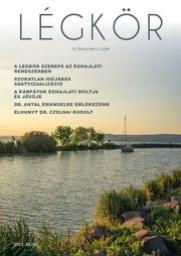LÉGKÖR - Quarterly Newsletter
Vol. 70, No. 3 * Pages 134–188 * July 2025
 |
|
 download [pdf: 25978 KB]
download [pdf: 25978 KB]
The role of the atmosphere in the climate system
Haszpra László
DOI:10.56474/legkor.2025.3.1 (pp. 134–142)
Haszpra László
DOI:10.56474/legkor.2025.3.1 (pp. 134–142)
Unusual Weather Visualisation – the design and methodology of a science communication tool
Mikes Márk Zoltán, Dezső Zsuzsanna, Hollós Roland, Pongrácz Rita
DOI:10.56474/legkor.2025.3.2 (pp. 143–150)
Mikes Márk Zoltán, Dezső Zsuzsanna, Hollós Roland, Pongrácz Rita
DOI:10.56474/legkor.2025.3.2 (pp. 143–150)
The past and the future of the Carpathians’ climate: changes between 1951 and 2100
Fritz Petra, Kis Anna
DOI:10.56474/legkor.2025.3.3 (pp. 151–156)
Fritz Petra, Kis Anna
DOI:10.56474/legkor.2025.3.3 (pp. 151–156)
LÉGKÖR - Quarterly Newsletter
A folyóirat nyomtatott változata megrendelhető a legkor@met.hu címen.
Kapcsolat: legkor@met.hu
SZERKESZTŐBIZOTTSÁG
SZERZŐI ÚTMUTATÓ
Kapcsolat: legkor@met.hu
SZERKESZTŐBIZOTTSÁG
SZERZŐI ÚTMUTATÓ









